The Future of Ecology
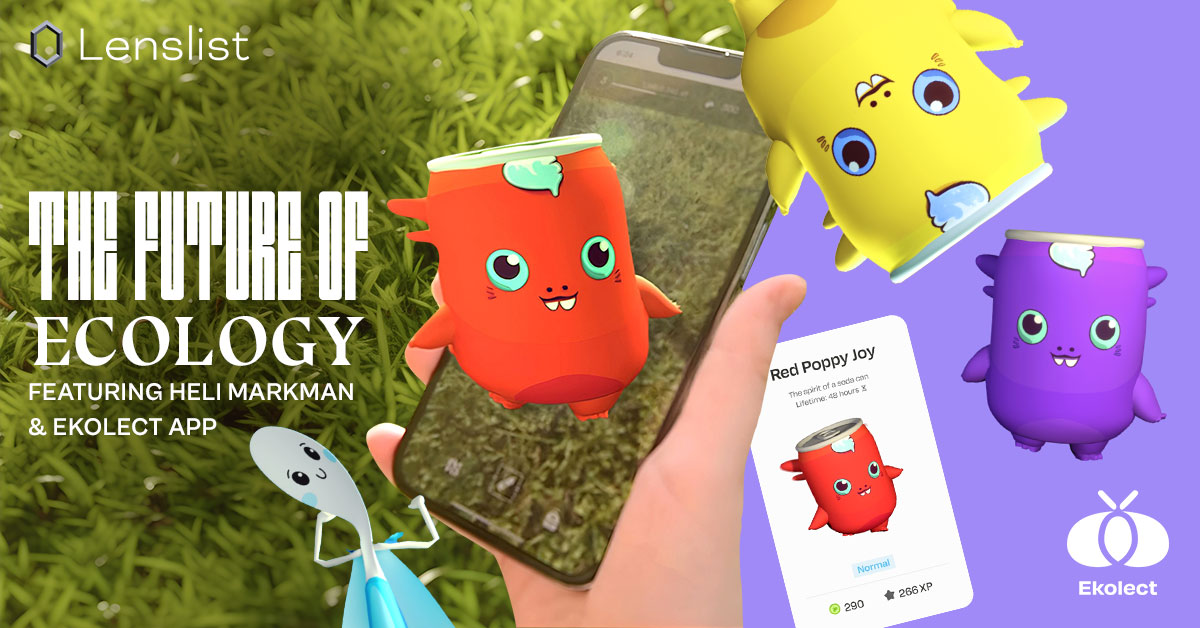
Now, probably more than ever, ecology is on everyone’s tongue. Zero-waste products are all over the market, and while it might seem like just another trend, it’s so much more than that. This time the concern is real. We are all worried about the state of our planet, and with so many resources to learn from, it’s essential to leave our mark.
But how do we do that?
It’s easy to stumble upon confusing information, often contradicting each other, leaving us totally green, and not even in the way we had hoped!
The key is to know where to look, especially when technology makes it a fun, engaging experience. At the same time, it’s giving us access to practical knowledge. And we’ve always said that AR can be so much more than just an entertainment tool! That’s why today we’re on a more serious topic, looking closer at AR’s impact on ecology.
Heli Markman, the Creator of the Ekolect App, shared with us some insight on her own experience. But let’s start from the beginning!
What was the inspiration for the Ekolect App? How did you come up with the idea of connecting AR with ecology?
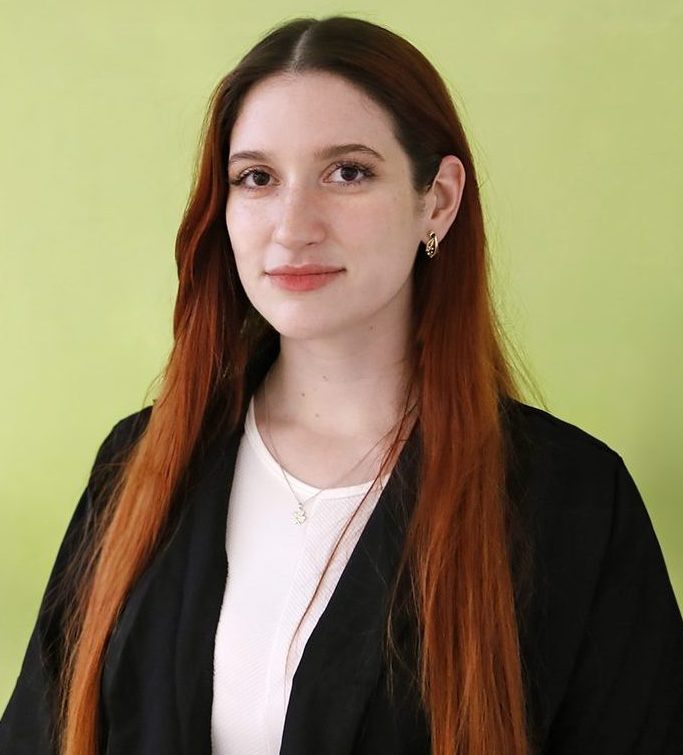 The inspiration behind Ekolect was born from a desire to make a tangible impact using design and technology and the idea to create a dedicated app came to me during my time as a Visual Communication student. the first semester of my final year, as I began thinking of ideas for my final project, I realized that what really intrigues me is exploring ways to address real-world issues through design centered solutions. So I decided to make the idea come to life as my bachelor’s project.
The inspiration behind Ekolect was born from a desire to make a tangible impact using design and technology and the idea to create a dedicated app came to me during my time as a Visual Communication student. the first semester of my final year, as I began thinking of ideas for my final project, I realized that what really intrigues me is exploring ways to address real-world issues through design centered solutions. So I decided to make the idea come to life as my bachelor’s project.
Already then, I knew that I wanted to design something that has a purpose, something that not only exists on a screen but resonates in the real world. I’ve always been fascinated by new technologies, which have greatly influenced my design approach. That is the reason I decided to take a step into the field of XR Design, explore the countless uncovered opportunities within it, and the potential it has to affect our lives.
The question that guided me was – How can I use design and AR technology to positively influence our world? This led me to the idea of integrating AR and gamification to tackle environmental concerns. My goal was to raise awareness, foster better recycling habits and make recycling engaging and enjoyable, especially for the younger generation. Drawing inspiration from successful AR games like Pokemon Go, I envisioned a platform that would motivate people to step outdoors not just for entertainment, but to actively contribute to a cleaner environment.
Another source of inspiration was a game I used to play in my childhood called Ekoloko.
It was an online game for kids where you could explore a virtual world, connect with friends and play games, all centered around protecting the environment and the planet. Ekoloko was a great inspiration for the world I wanted to create, it demonstrated the potential of a virtual environment to engage children with fun elements, while also delivering valuable lessons about environmental issues. Sadly, the game was closed down in 2017, but the memories from my childhood tied to it fueled me even more and inspired me to create something new!
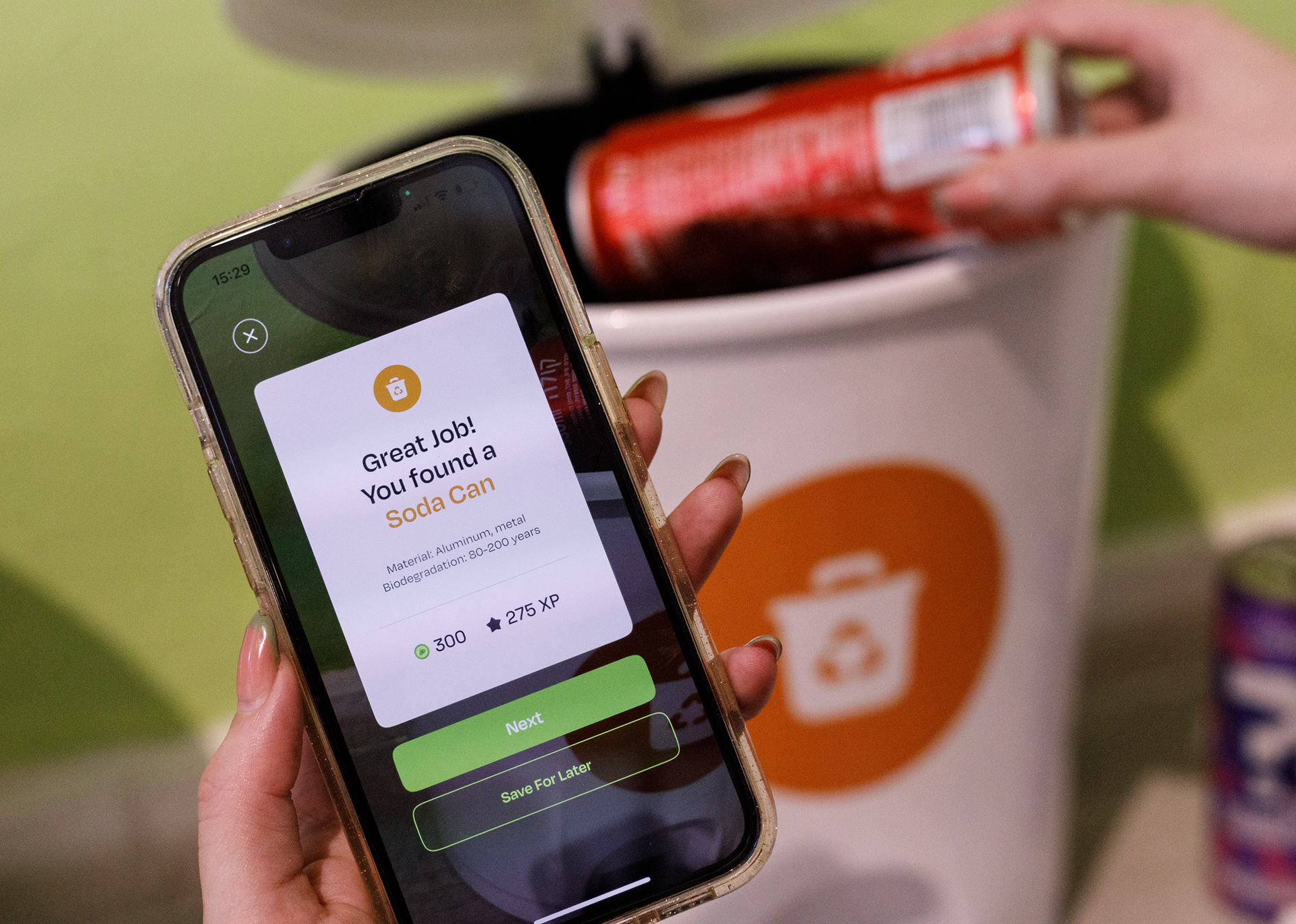
With these influences, Ekolect emerged as a fusion of gaming excitement and eco-consciousness, offering a fun yet impactful way to encourage recycling and environmental awareness among children and teenagers. Ultimately, Ekolect is a product of my passion for technology, problem-solving, and the belief that design can drive positive change in our world.
Could you tell us more about how Ekolect works and share the creative process behind designing the app?
 Ekolect is an AR gamified app that creates a fun & educational experience around recycling and cleaning our environment. Imagine a world where positive environmental impact is as fun as playing a game! In the world of Ekolect, in every trash item there’s a unique creature trapped, and as players, your mission is to free these creatures by recycling!
Ekolect is an AR gamified app that creates a fun & educational experience around recycling and cleaning our environment. Imagine a world where positive environmental impact is as fun as playing a game! In the world of Ekolect, in every trash item there’s a unique creature trapped, and as players, your mission is to free these creatures by recycling!
Ekolect is a demo, made as a POC for how recycling apps could work and support users in the care for the enviroment. For each recycled or disposed trash item, you’ll receive its unique virtual creature. These creatures appear in the virtual world, in the spot where the trash item was. Players can experience a virtual shared reality, where they see their own and other people’s creatures in AR. This concept not only encourages players to contribute to the environment but also allows them to witness their virtual mark on the physical world, creating a powerful connection between gaming, sustainability, and real-world impact.
The creative process behind Ekolect was divided into three key phases – the concept (ideation), the research, and the design.
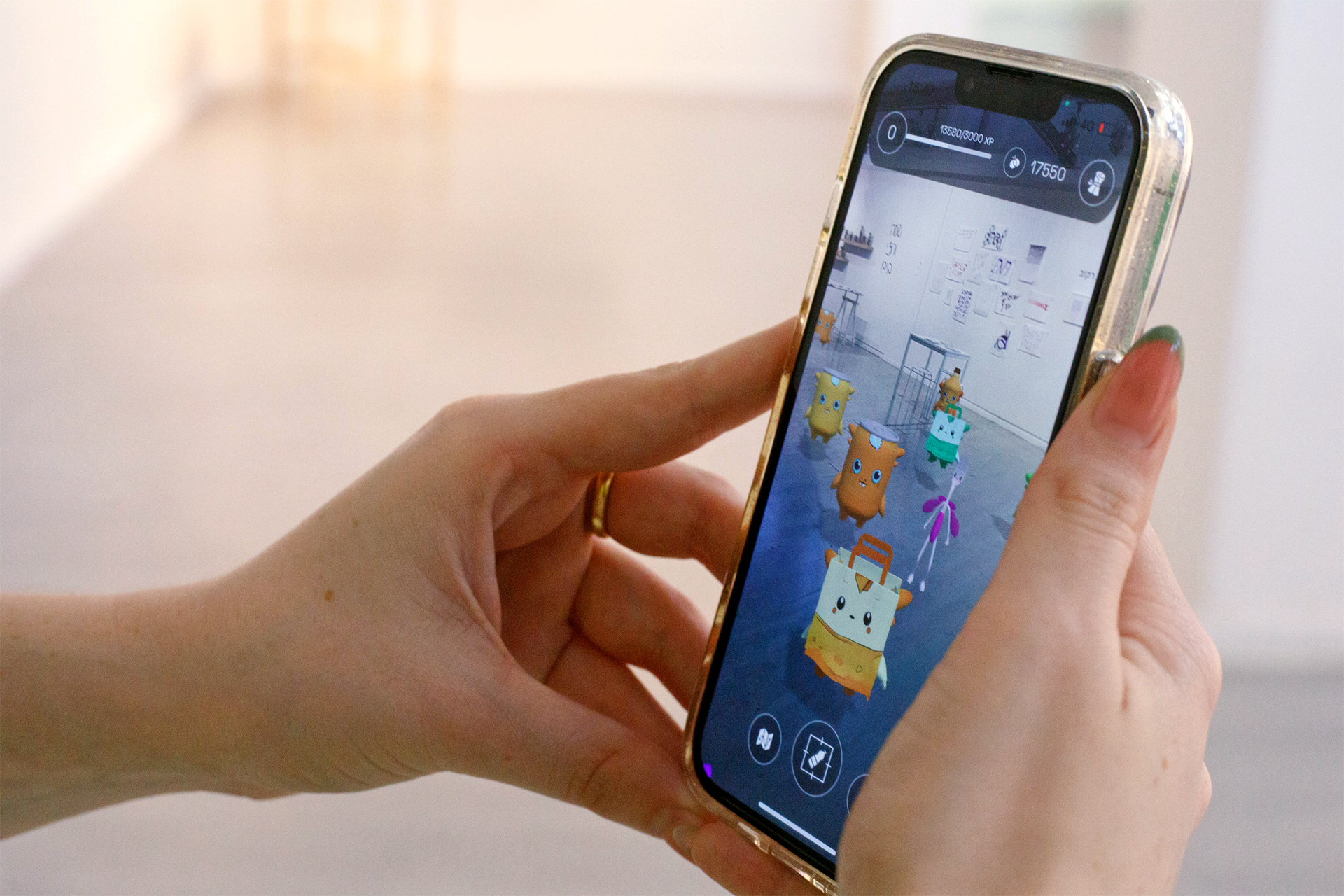
Concept Stage:
The concept behind Ekolect is simple yet powerful, the double meaning behind – “Leave your mark on the world”. With every act of recycling or disposing, you leave a positive mark on the environment, but that’s not all! The virtual creatures you release become your virtual mark on the world, creating a powerful connection between gaming, sustainability, and real-world impact.
A key influence and a major step in the creative process came from a design meetup I attended. I had the opportunity to hear an inspiring lecture on XR Design (AR, VR, XR) by Shay Segal, who is the Head of XR at Resight. Shay shared insightful details about the future prospects of XR in the design field, and explained about an innovative product developed by her company, Resight.
Resight was designed to seamlessly integrate with Unity, enabling objects to persist in the world over time and be synchronized across all users.The technology behind Resight sparked a new perspective in me, which played a role in shaping the fundamental concept and mechanics of Ekolect. Thanks to their assistance and support, making a functional demo of Ekolect became possible. At the technical level, we used Resight’s Engine to seamlessly position creatures in the real world, maintaining their location over time, and enabling everyone to easily view and interact with them.
Research Stage:
After the idea and concept of the app were set, I delved into market research to understand the existing products in the field, researching apps and games revolving around recycling, exploring AR/VR and gamification implementations for recycling habits and environmental causes. In the next step, I started focusing my target audience and creating user personas. The target audience was narrowed down to children and teenagers, with the idea in mind that people from any age range could also enjoy playing. Further research involved visual analysis of popular AR games like Pokémon Go, Pikmin Bloom, and Peridot. This research provided invaluable insights and inspiration that guided the design phase.
Design Stage:
During the design phase, I had to work on multiple aspects of the project simultaneously, tackling various fronts at once. The initial step was developing the visual identity, UI style and branding of the app. Inspired by Asian games, successful AR games and Japanese design, which often feature minimalist aesthetics, I envisioned a seamless and visually uncluttered user interface to strike a balance with the rich AR environment and creatures. Simultaneously, I designed the UI screens and visuals, improving and perfecting the UX of various features. Meanwhile, I also worked on the concept design of the various trash creatures. This was a very intensive yet exciting period, I had to learn new skills, such as 3D Modeling and animating to create the creature characters, tasks prioritization, exploring new technologies and incorporating AI to make my workflow more efficient.
I had only 3 months from the beginning of the design stage, so prioritization became a necessity. Therefore, the plan was to build something that could serve as a proof of concept (POC), and reflect the vision and future potential of the project if it would have continued to develop. Despite doubts and difficulties, I was determined to create an app that will actually work. That required creating a simplified version of the app, with minimal features and focus on the base flow. Eventually, with the help of development efforts, we’ve managed to bring a fully functional demo to life, allowing visitors of the exhibition to test and experience the Ekolect firsthand!

To convey the full scope of the project at the exhibition, I created two videos – a Promo video and an App overview video – showcasing the project’s vision, concept, and advanced features. The project was presented as a part of graduate’s exhibition, held at Minshar College of Art in Tel Aviv, 19/07/23-05/08/23. Visitors had the opportunity to download the demo and see all the creatures that others had placed in the gallery. They could scan trash items using a unique QR code on each item, recycle them, and get their own special creatures!
Do you think that technology like, for example, AR, can make an impact in educating people about ecology and motivating them to take care of the environment?
 Absolutely! I believe that technology like AR has the potential to make a significant impact in educating people about ecology and inspiring them to be more mindful of the environment. AR offers an immersive and engaging way to connect with information and concepts that might otherwise seem distant or complex. This kind of engagement can spark curiosity and awareness, especially among younger generations who are accustomed to digital interactions.
Absolutely! I believe that technology like AR has the potential to make a significant impact in educating people about ecology and inspiring them to be more mindful of the environment. AR offers an immersive and engaging way to connect with information and concepts that might otherwise seem distant or complex. This kind of engagement can spark curiosity and awareness, especially among younger generations who are accustomed to digital interactions.

Combining AR with educational content creates a powerful tool for raising awareness and promoting responsible behaviors, ultimately contributing to a more eco-conscious society. Moreover, I truly believe that learning through experience and games is a very powerful and effective form of education. When learning is embedded within the context of a game, individuals absorb knowledge during the experience, retain it better, and find the learning process more engaging and enjoyable. By integrating AR and technology with gamification, we have the potential to revolutionize education across various domains.
What are, in your opinion, some of the opportunities for AR and other technologies when it comes to ecology, the environment, and its future?
 In the field of ecology, different applications of AR can help raise awareness, enrich our knowledge, foster better habits and shape a sustainable future. Augmented reality has the ability to bridge the gap between complex environmental concepts and everyday life.
In the field of ecology, different applications of AR can help raise awareness, enrich our knowledge, foster better habits and shape a sustainable future. Augmented reality has the ability to bridge the gap between complex environmental concepts and everyday life.
By overlaying digital information onto the real world, people can visualize environmental changes and pollution levels in their immediate surroundings, individuals can easily get information about their surroundings, such as how/where to recycle items, how to improve their habits and more. The visual context can make abstract environmental issues and hard to find information more tangible and relatable. AR combined with data visualization can greatly improve environmental data accessibility, helping the society to make informed choices and take action to protect the environment.
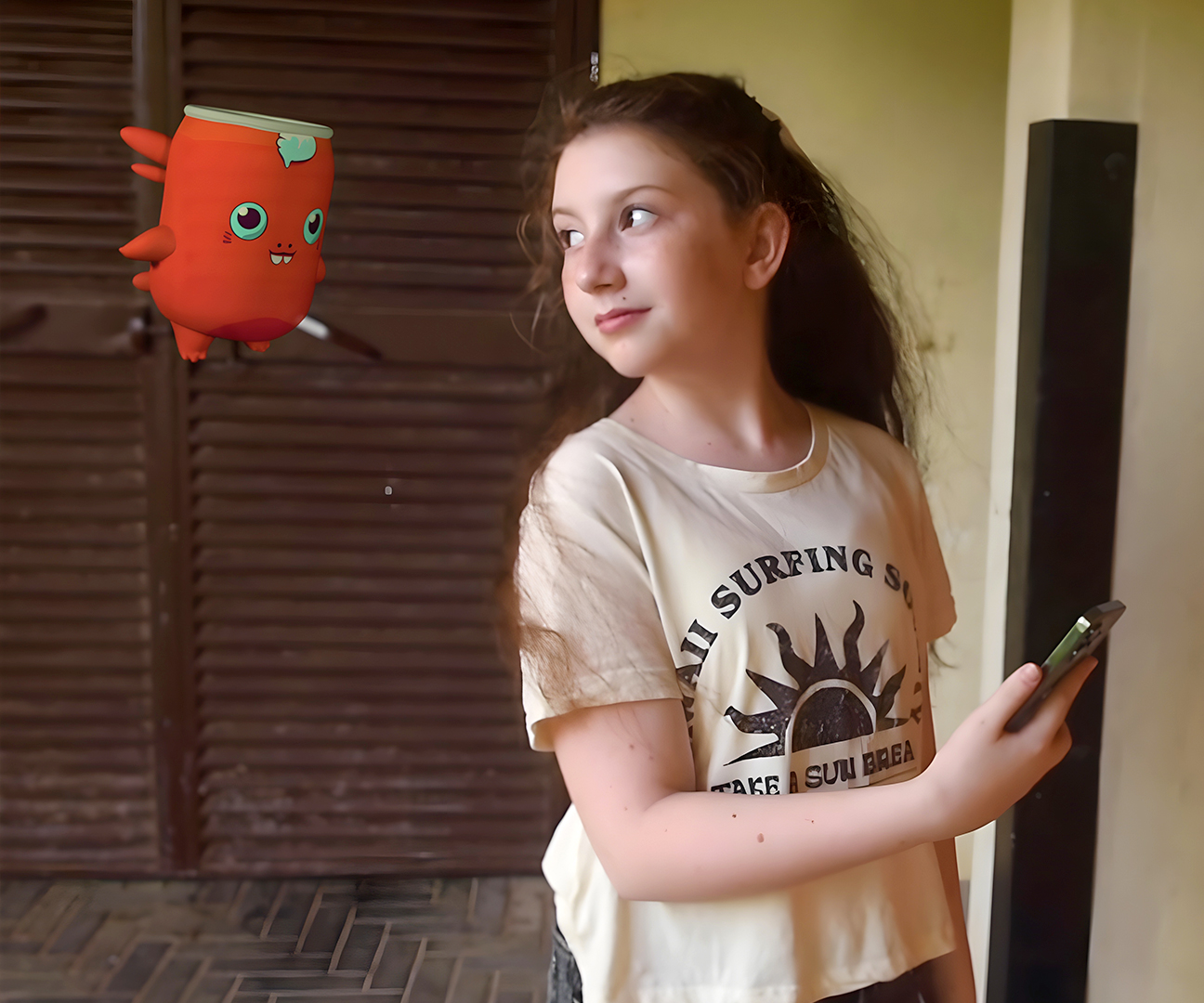
The landscape is full of unexplored possibilities, like stepping into a new territory where not everything is invented yet, and creativity knows no bounds. This dynamic creates a bit of a loop, where the lack of widespread adoption prevents significant developments. The AR glasses available on the market are too expensive for most people, which causes a situation where there’s not many potential users and limited business interest.
Conversely, people are hesitant to get involved in AR and wouldn’t purchase the glasses due to the lack of available content. Without a surge in innovative AR products, user interest remains low, and businesses hesitate to invest. The challenge lies in sparking a cycle of growth and engagement within this evolving space, and I believe that together with technological advancement the future will bring it.

What’s my main takeaway goal for the project?
I want to broaden people’s perception of design, showing that it extends beyond printed materials or screens, with the ability to shape our tangible world. With the help of technology, design can seamlessly integrate into our surroundings, offering endless opportunities to address needs, enhance lives, and tackle real-world problems.
AR and games extend beyond mere entertainment, they hold the potential to create a positive impact on our physical world, and we have the ability to drive this transformation. I created this project as a proof of concept, aiming to demonstrate the potential of AR and XR design. With the intention to inspire creative people to delve into these fields and drive innovation.
As Heli Markman proved herself, technology really is the bridge between us and environmental care, that we didn’t see coming. 🌍 Apps like Ekolect make it easy to navigate through the complicated world of ecology, at the same time creating fun experiences that motivate us to take action and leave our own mark. 👣
Looking at all of the changes we can be a part of, the future really looks bright and we could’t be more excited to be a part of it ☀️
